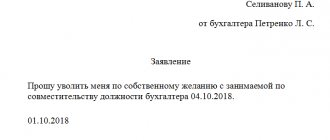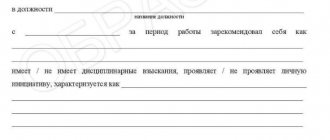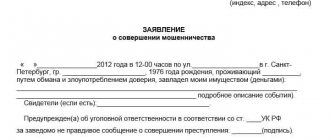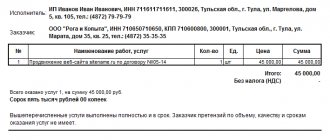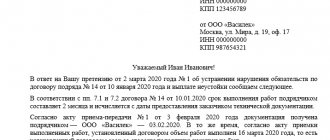Maternity leave and subsequent parental leave is time that an employee can devote to herself and her family. But the production process should not stop, so the functions of a “maternity maid”[1] must either be transferred to another temporarily hired or transferred employee, or distributed among existing employees.
It often happens that the employee who replaced the “maternity leaver” also goes on maternity leave, and subsequently on parental leave. It turns out that it is necessary to invite another employee to this position and the situation becomes more and more confusing.
The issue of replacing an absent employee is usually resolved in one of the following ways:
1) a new employee is hired under a fixed-term employment contract (Part 1 of Article 59 of the Labor Code of the Russian Federation):
• as a main employee;
• at the same time;
2) an employee of the organization is temporarily transferred (Article 72.2 of the Labor Code of the Russian Federation);
3) part of the work of the “maternity leaver,” along with the work specified in the employee’s employment contract, is performed by one or more employees. That is, additional work is formalized in the form of performing the duties of a temporarily absent employee without being relieved of one’s own duties for an additional fee (Article 60.2 of the Labor Code of the Russian Federation);
4) combined methods (for example, a part-time worker is hired under an employment contract, but some of the responsibilities are transferred to another employee of the organization).
At the same time, additional work, according to Art. 60.2 of the Labor Code of the Russian Federation, the employer has the right to cancel by simply warning the employee about this in writing no later than three working days. Moreover, the employer is not obliged to indicate the reason why he refuses the agreement to perform additional work[2].
But the dismissal of workers who replaced a woman on maternity leave, or their transfer to their previous place of work does not always go smoothly. Taking into account the fact that these are the most popular ways for an employer to act in this situation, let’s consider them in more detail.
WE HIRE AN EMPLOYEE UNDER A FIXED-TERM EMPLOYMENT CONTRACT
This is the most common option for temporarily replacing an absent employee. Let's consider what you need to pay attention to when preparing personnel documents in order to avoid unnecessary legal risks.
Part 1 art. 59 of the Labor Code of the Russian Federation allows you to conclude a fixed-term employment contract for the duration of the duties of an absent employee, who retains his place of work. According to Part 2 of Art. 57 of the Labor Code of the Russian Federation, in a fixed-term employment contract, it is necessary to indicate the duration of its validity and the reason for its urgency. Moreover, in this case, the deadline and the reason coincide - this is the absence of the main employee.
The wording in an employment contract, for example, could be as follows:
1.3. The employment contract was concluded for the period of absence of A. N. Mankova.
The employment order must also indicate the urgency of the work.
An entry about employment in the work book is made without indicating the fixed-term nature of the contract.
In what cases is a deputy needed?
There are a number of circumstances in which an organization may need a new specialist.
Admission to a position for a temporary period is provided if the person holding it permanently:
- is on maternity leave;
- disabled for a long time;
- went on a business trip abroad.
In addition, temporary employment is also carried out for seasonal activities, work for a period of up to 2 months, to fulfill a specific labor purpose, or for work of a public nature.
Most often, hiring is carried out during the maternity leave of the main employee and hiring during the absence of the main employee. Hiring while on sick leave is practiced only in cases of long-term illness and incapacity of the employee.
WE TEMPORARILY TRANSFER ANOTHER EMPLOYEE
If management decides to involve an employee of their organization in performing the labor function of a “maternity maid” without inviting an outsider, then in such cases his temporary transfer should be arranged.
Let us pay attention to the points that are important when registering the transfer of an employee to a “maternity” position.
According to Art. 72.2 of the Labor Code of the Russian Federation, by agreement of the parties, concluded in writing, an employee may be transferred to another job to replace a temporarily absent employee temporarily - until this employee returns to work.
For such a transfer, an additional agreement is drawn up. The wording in it, for example, could be like this:
The parties to the employment contract dated January 1, 2017 No. 1 agreed on the following. 1. The employee is transferred to the position of sales manager temporarily, for the period of temporary absence of A. N. Mankova. 2. The employee is given a salary of 20,000 rubles. per month. 3. Other terms of the employment contract remain unchanged.
Based on this additional agreement, an order is issued to temporarily transfer the employee to another job.
There is no need to make an entry in the work book, since according to Art. 66 of the Labor Code of the Russian Federation, an entry about a temporary transfer of an employee is not made in the work book (unlike a permanent transfer).
Where to go after maternity leave ends
An employee working part-time has the same rights as any main employee. Therefore, a woman has the right to return to work from maternity leave both to her main job and to the employer for whom she worked part-time. If a maternity leaver is planning to leave, then you need to contact your organization and write a statement. The employer, for its part, issues an order for the employee to return from maternity leave. If a temporary employee worked in a woman’s place during her absence due to pregnancy, childbirth and child care, he is subject to dismissal in connection with the departure of the main employee.
WE FIRED A TEMPORARY WORKER
If instead of a “maternity leaver” an employee worked under a fixed-term employment contract, then with her release the time comes to terminate such an employment contract. According to Part 3 of Art. 79 of the Labor Code of the Russian Federation, the departure of the main employee is an unconditional basis for the dismissal of a temporary employee who worked in his place.
Practice suggests taking into account some features of the dismissal procedure in this case.
As a general rule, three calendar days before the termination of a fixed-term employment contract, the employer must notify the employee of the termination of the contract (Article 79 of the Labor Code of the Russian Federation). However, for the case we are considering, the Labor Code of the Russian Federation makes an exception and does not oblige the employer to take this step.
Therefore, the personnel service must immediately begin processing the dismissal of a temporary employee.
If a temporary worker is pregnant
The situation becomes more complicated if the employee who needs to be fired happens to be pregnant. As a general rule, if the term of the employment contract expires during the employee’s pregnancy, the employer is obliged, at the request of the woman, to extend the term of the employment contract until the end of maternity leave.
But the situation with a pregnant employee on maternity leave when the main employee leaves is an exception to the rule (Part 3 of Article 261 of the Labor Code of the Russian Federation). Her dismissal is allowed without extending the term of the contract if it is impossible to transfer her to another job available to the employer (either a vacant position or work corresponding to the woman’s qualifications, or a vacant lower position or lower-paid job), which the woman can perform taking into account her state of health.
Thus, if the organization has a vacant position that fits the above description, then the employee must be offered it - in writing and against signature.
If the employee agreed to the transfer, it is necessary to draw up an additional agreement to the employment contract and an order for the transfer. At the same time, the employment contract with her must be extended until the end of the pregnancy (Part 2 of Article 261 of the Labor Code of the Russian Federation)[3].
If there are no vacant positions, in our opinion, it would be a good idea to notify the woman about this in order to avoid disputes in the future.
So, if the employee refuses the transfer or the organization does not have suitable vacant positions for her, an order should be issued to dismiss the temporary employee.
On the same day, it is necessary to draw up all personnel documents and perform actions related to the dismissal, including issuing her a work book and making payments.
If the employee is absent from work (vacation, illness), the employer nevertheless has the right to dismiss her, since the expiration of the employment contract does not constitute dismissal at the initiative of the employer.
How to go on maternity leave if you already work part-time
The Labor Code (Articles 282 and 60.1) establishes the right of an employee to perform labor duties for several employers at once. That is, an employee can perform additional work for additional money during the time when he is not busy at his main workplace.
If a woman becomes pregnant while working part-time, she can go on maternity leave, and then on maternity leave.
But it is necessary to document this fact without errors. Going on maternity leave for a part-time worker is no different in terms of the registration procedure from going on maternity leave for the main employee. The employee simply prepares the necessary documents, writes a statement to the employer, and the organization, in turn, issues a corresponding order.
How to apply correctly?
A temporary cooperation agreement is drawn up after receiving the employee’s application and conducting a conversation with him, where working conditions, wages, work schedule, grounds for termination of the contract and other points are discussed. The government has not developed or approved a unified form for a fixed-term employment contract.
Therefore, the employer has the right to draw up such a document in any form. It is important to adhere to the structure and reflect all the necessary information. It should be noted that many heads of organizations develop proprietary templates for fixed-term contracts. In this case, it is necessary to take into account the norms of Article No. 57 of the Labor Code and the specifics of the company’s activities.
Approximate structure of a fixed-term contract:
- document's name;
- details of both parties;
- subject of the contract;
- basic provisions;
- validity;
- probation;
- terms of remuneration;
- rights and obligations of the two parties to the labor relationship;
- guarantees and compensation;
- responsibility of both parties;
- final provisions;
- details of both parties and signatures.
What you need to know about the document
The maternity leave is issued on the basis of the sick leave certificate provided by the employee, issued in accordance with current standards. If a woman (less often a man) plans to go on vacation later than the period indicated on the sick leave, they draw up a statement indicating the date of going on maternity leave. This document is the main basis for drawing up an order for the enterprise and permission to search for another specialist. A fixed-term contract is concluded with a new employee (Article 23 of the Labor Code).
A fixed-term employment contract (Article 23 of the Labor Code) is concluded by the employing company with a temporary new employee.
Those employees who are employed on a fixed-term basis have similar rights and responsibilities to “perpetual” personnel (that is, all employees of the organization). The schedule for them is the same as the official salary, bonuses, and benefits package.
In an application for temporary work, the urgency of the relationship is indicated, and the wording must be extremely precise - in order to avoid future misunderstandings associated with the dismissal of a new employee due to the return of the old one from maternity leave.
If the document states that it is drawn up “before the employee actually returns from maternity leave,” then it can be terminated before the three-year period - for example, a permanent employee decides to begin his professional duties in a year or a year and a half.
Based on the order for a permanent employee to go on parental leave, an entry is made into the labor record of a new specialist. Information about the urgent nature of employment is not indicated. Dismissal is not formalized by application, but by unilateral order.
The main difficulty of a temporary contract for an employer is to correctly indicate the time of termination.
The employer should correctly formalize the validity period of a fixed-term contract so as not to find itself in a difficult position in the future if the previous employee returns from vacation before the three-year period. It is optimal to draw up a contract for the duration of the actual stay of a permanent employee on maternity leave - in this case, a temporary one can be dismissed by order in the form immediately after the return of the first one.
Dismissal of persons working temporarily
If a fixed-term contract was concluded
When maternity leave is over or interrupted and the permanent employee has returned to his place, the temporary replacement employee is fired by order of the manager. The labor contract states that the fixed-term employment contract has been terminated.
But a person serving under a temporary contract may leave before the end of the employment relationship. This can be done on a general basis. Management must be notified of the decision 2 weeks before dismissal. In case of mutual agreement, this period can be reduced.
The order of acceptance to work
After preparing and signing the employment contract, an order is prepared in form No. T-1. This document will be stored in the archive and may be useful in the future (for applying for a pension), so it must indicate the period of work at a temporary place.
Is it possible to go on maternity leave on maternity leave?
Read how to apply for time off here.
Vacation at your own expense: can they refuse, read the link:
Decree and documents
They must give her the documents and complete them correctly. The process is handled by the HR department; the expectant mother’s vacation is divided into three parts:
- gestation, postpartum time;
- care leave for up to one and a half years;
- extending this period until the child reaches three years of age.
All applications for leave must be submitted to the manager in advance. When applying for a BIR, you must include sick leave for 70 or 84 days. It all depends on the day of birth of the child or pregnancy (for example, multiple births).
After delivery, the employer is presented with a certificate from the hospital or a certificate of birth of the baby. These papers serve as the basis for crediting a one-time benefit due to the fact that a woman has a baby.
The woman is required to keep her job. And until the child turns three years old. When the child reaches 1.5 years old, the payment of care benefits stops.

